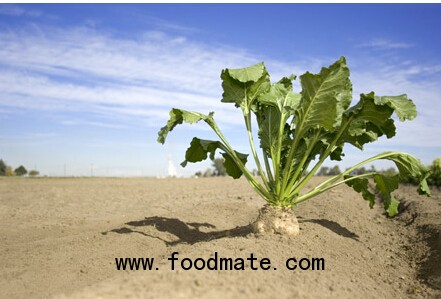
Sugar prices are poised for only a gentle recovery over the next decade, and in real terms will decline, the United Nations and OECD said, flagging a “saturated” market for the sweetener in developed countries.
Global sugar production will return to deficit next year, after five years in surplus, the UN’s food agency, the Food and Agriculture Organization and the OECD said in a key outlook report, giving forecasts for agricultural commodities from 2015-24.
However, the return to a production shortfall will not set a trend, the briefing said, forecasting that output will grow faster than demand over the long-term – painting a downbeat picture for prices.
Real term decline
The FAO and OECD forecast the front month New York raw sugar contract reaching 16.5 cents a pound by 2024.
This is up on current prices, with the spot contract trading at 12.34 cents a pound on Wednesday, but would represent a decline in real terms, when broader inflation is factored in.
The front month London white sugar contract is seen at $434 a tonne nominal value in 2024, representing a narrowing of the premium of white, or refined, sugar over raw sugar.
The market is expected to remain subdued thanks to a stocks-to-use ratio which seen showing little improvement over the coming decade, as supply outstrips demand.
Supply to outpace demand
Global sugar production is projected to increase by 2.2% a year in the coming decade to reach nearly 220m tonnes by 2024, up 38m tonnes from average production over 2012-2014.
Brazilian production is expected to remain the key to world sugar prices, with the FAO drawing attention to the key role of currency factors in long term production.
A strengthening dollar, and continued weakness in the Brazilian real, would reduce the dollar denominated cost of sugar production in Brazil, the world’s largest exporter, encouraging continued strong supply.
The deregulation of the EU sugar beet industry in 2017 has been widely forecast to increase production and weaken prices. However, the FAO sees most of the additional production coming from cane-producing countries.
Brazil to remain key
Demand for ethanol, which competes with sugar for cane in countries such as Brazil, is seen increasing, as the share of cane going to make the biofuel rises from around 20% average over 2012-14 to 26% in 2024.
Brazil is seen as keeping its dominant position as a sugar exporter, at around 40% of global exports, while Thailand boosts its market share.
India, which is both a huge consumer and producer of sugar, is expected to continue swinging between being a net importer and exporter.
Asia, Africa to drive demand
Meanwhile, global sugar consumption is seen growing at just 2% a year, to reach 214m tonnes in 2024.
Developing economies in Asia and Africa are seen driving sugar demand growth, while “mature or saturated” markets in the developed world show little or no growth.
The global stock-to-use ratio, a key pricing metric, is expected to fall to 36% by 2024, compared to 40% over 2012-14
Global sugar production will return to deficit next year, after five years in surplus, the UN’s food agency, the Food and Agriculture Organization and the OECD said in a key outlook report, giving forecasts for agricultural commodities from 2015-24.
However, the return to a production shortfall will not set a trend, the briefing said, forecasting that output will grow faster than demand over the long-term – painting a downbeat picture for prices.
Real term decline
The FAO and OECD forecast the front month New York raw sugar contract reaching 16.5 cents a pound by 2024.
This is up on current prices, with the spot contract trading at 12.34 cents a pound on Wednesday, but would represent a decline in real terms, when broader inflation is factored in.
The front month London white sugar contract is seen at $434 a tonne nominal value in 2024, representing a narrowing of the premium of white, or refined, sugar over raw sugar.
The market is expected to remain subdued thanks to a stocks-to-use ratio which seen showing little improvement over the coming decade, as supply outstrips demand.
Supply to outpace demand
Global sugar production is projected to increase by 2.2% a year in the coming decade to reach nearly 220m tonnes by 2024, up 38m tonnes from average production over 2012-2014.
Brazilian production is expected to remain the key to world sugar prices, with the FAO drawing attention to the key role of currency factors in long term production.
A strengthening dollar, and continued weakness in the Brazilian real, would reduce the dollar denominated cost of sugar production in Brazil, the world’s largest exporter, encouraging continued strong supply.
The deregulation of the EU sugar beet industry in 2017 has been widely forecast to increase production and weaken prices. However, the FAO sees most of the additional production coming from cane-producing countries.
Brazil to remain key
Demand for ethanol, which competes with sugar for cane in countries such as Brazil, is seen increasing, as the share of cane going to make the biofuel rises from around 20% average over 2012-14 to 26% in 2024.
Brazil is seen as keeping its dominant position as a sugar exporter, at around 40% of global exports, while Thailand boosts its market share.
India, which is both a huge consumer and producer of sugar, is expected to continue swinging between being a net importer and exporter.
Asia, Africa to drive demand
Meanwhile, global sugar consumption is seen growing at just 2% a year, to reach 214m tonnes in 2024.
Developing economies in Asia and Africa are seen driving sugar demand growth, while “mature or saturated” markets in the developed world show little or no growth.
The global stock-to-use ratio, a key pricing metric, is expected to fall to 36% by 2024, compared to 40% over 2012-14





